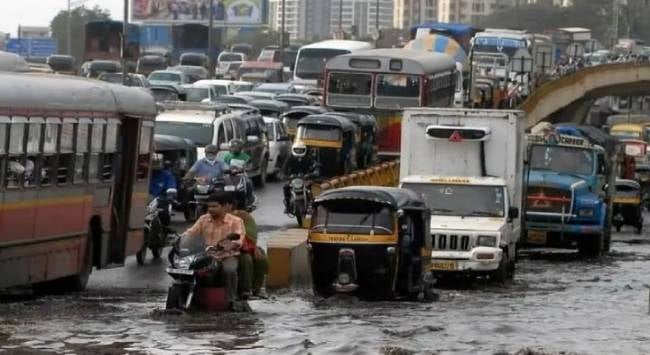Summary
India’s global climate positions have moved beyond the United Nations frameworks to smaller more nimble mechanisms where New Delhi has the capability to shape and affect positive outcomes.
The recent passing of legendary former Indian Ambassador Chandrashekhar Dasgupta struck a chord for those who have tracked India’s climate politics and foreign policy. His path-breaking leadership resulted in installing and defending equity at climate negotiations through the notion that the developing countries had common but differentiated responsibilities (CBDR) on mitigation given per capita carbon emissions. It is a testament to Dasgupta’s remarkable diplomatic acumen that this particular principle remains rooted when India discusses climate matters at the annual United Nations (UN) Framework Convention on Climate Change Conference of Parties (COP) meetings.
New Delhi continues to resist and rebuff calls to erode the differentiation between developed and developing countries. Though CBDR remains relevant, India’s climate persona has evolved, willing to work with and leverage existing and emerging international regimes and frameworks to advance its widening climate interests. What we see now is an India that is diplomatically agile and nimble, working across multilateral, bilateral and minilateral fora to secure financing, technology and capacity to drive decarbonisation.
International climate politics has fragmented and moved beyond COP settings where countries are exploring and clinching new ways of advancing decarbonisation. To be sure, multilateral climate negotiations matter and should continue. COP discussions form a key node in India’s climate diplomacy as international climate politics disaggregates across levels and frameworks. Besides COP, multilateral development banks like the World Bank and the Asian Development Bank remain important partners for climate progress.
For example, India remains a key priority under the World Bank’s 2021-2025 Climate Change Action Plan that supports global climate mitigation. Similarly, India has worked with the UN Development Programme through the India-UN Development Partnership Fund to establish climate-warning systems for seven vulnerable Pacific island countries. Since 2017, India has retained a membership with the International Energy Agency to influence energy security outcomes.
Multilateral climate activities remain vital. However, the terrain has moved beyond – to bilateral, minilateral and other plurilateral frameworks. Of late, New Delhi has emphasised bilateral climate cooperation through partnerships with the European Union, the United States (US), Germany, France, Japan and the United Kingdom. Progress on clean and renewable energy and green technologies form a critical plank of India’s climate policies towards the European Union, most recently with the Trade and Technology Council, and with the US under the Strategic Clean Energy Partnership.
India and France have established a Roadmap on the Blue Economy to conserve and sustainably use the oceans, seas and maritime resources through greater scientific research, infrastructural cooperation, coastal zone management, and development of new technologies; Paris and Delhi also established the International Solar Alliance that advances solar energy access.
At the minilateral level, India works with different mechanisms like the Quadrilateral Security Dialogue (Quad) [comprising India, Australia, Japan and the US] to advance climate progress. All the Quad member states have pledged to focus their efforts to achieve COP targets, covering national emissions and clean energy deployment. There is optimism that the Quad, given its loose informal structure, can gradually include other issues on climate resilience, preparedness or adaptation, and not just mitigation. The Quad member countries could also extend their climate cooperation to the Pacific Islands through the Blue Economy programme that seeks to cleanse the oceans and maritime areas, home to critical resources like fish, rare earths and biodiversity. Also important is India’s engagement with the Coalition for Disaster Resilient Infrastructure, a global partnership designed to promote resilient infrastructures as climate risks rise.
Such frameworks across multilateral, bilateral and minilateral levels are not exhaustive but illustrative of India’s diffuse but strategic climate engagement. This year, India has a unique opportunity to use its G20 presidency to drive climate cooperation. New Delhi assumed the G20 leadership as crises abound and the desire for deep climate action is dwindling. To retain global attention on climate change, India should continue to reinforce the message that the developed countries must find new ways to fulfil, not deflect or delay, existing pledges.
Discussing multilateral development banks reforms at the G20 could highlight their importance to advance the climate cause. India’s ability to serve as a bridge between the developed and developing world can also be further explored through triangular climate partnerships in the Global South. Another opportunity exists to leverage the G20 and its mechanisms to increase climate finance, especially fusing both public and private capital to drive climate action. Green transitions must be a global, not a Global North endeavour.
All these frameworks – bilateral, minilateral and multilateral – are crucial to drive India’s climate transition. Climate and energy issues for both mitigation and adaptation will become a core foreign policy interest as countries realise the importance of domestic climate action to minimise and redress the pernicious effects of climate change. That international policy climate is also changing, and India is changing with it.
. . . . .
Dr Karthik Nachiappan is a Research Fellow at the Institute of South Asian Studies (ISAS), an autonomous research institute in the National University of Singapore (NUS). He can be contacted at isaskn@nus.edu.sg. The author bears full responsibility for the facts cited and opinions expressed in this paper.
Pic Credit: https://commons.wikimedia.org/wiki/File:Flooding_in_Mumbai,_India_2017.jpg
-
 More From :
More From :
-
 Tags :
Tags :
-
 Download PDF
Download PDF



